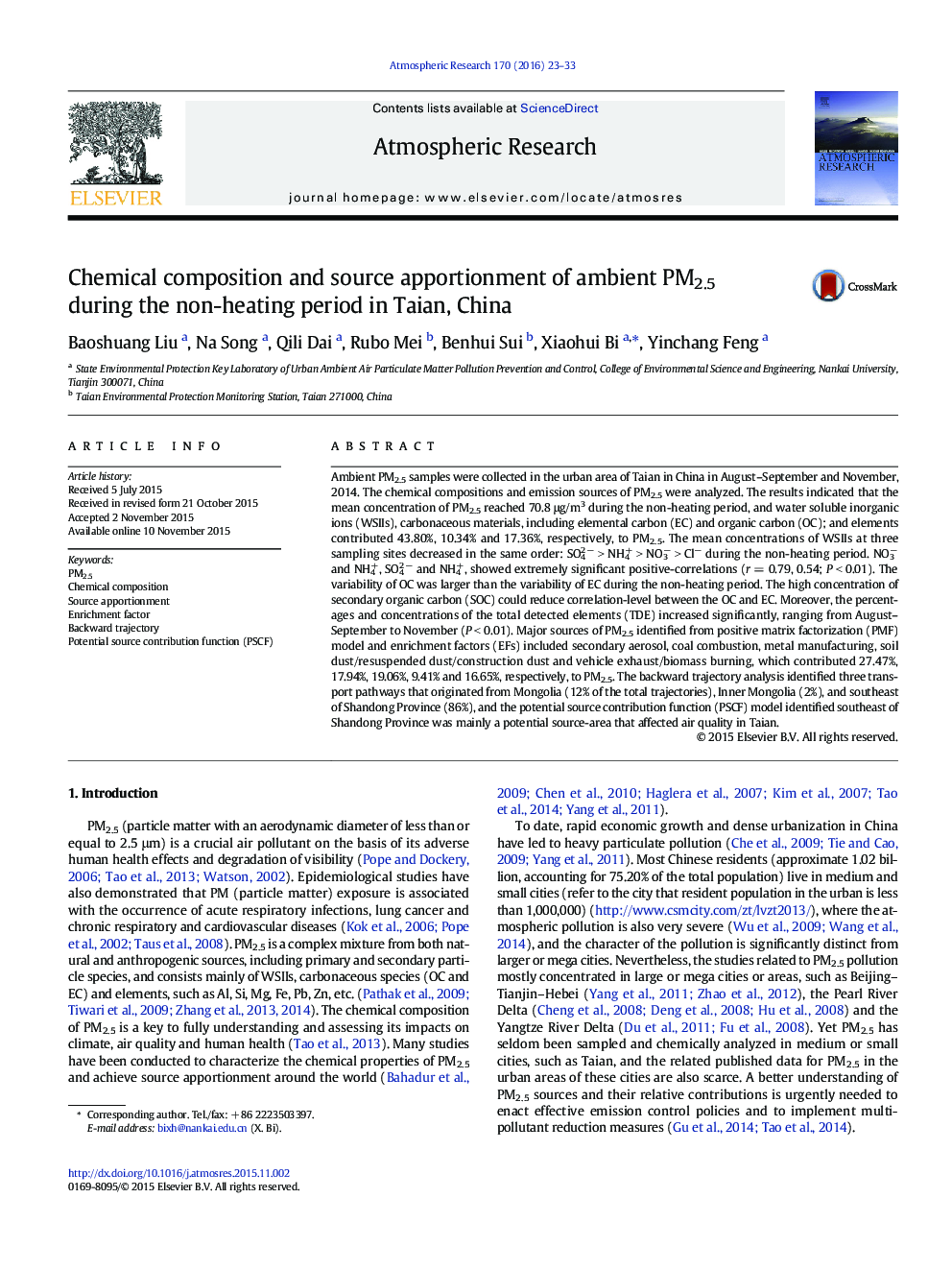| کد مقاله | کد نشریه | سال انتشار | مقاله انگلیسی | نسخه تمام متن |
|---|---|---|---|---|
| 4449579 | 1620507 | 2016 | 11 صفحه PDF | دانلود رایگان |
• The PM2.5 pollution level and emission-sources in medium–small city are investigated.
• The source apportionment was conducted by PMF in medium–small city of China.
• The air mass transport pathway was identified by the backward trajectory analysis.
• The potential source-areas affecting air quality were identified by PSCF model.
• Effective emission control policies can be enacted in terms of the results of source apportionment.
Ambient PM2.5 samples were collected in the urban area of Taian in China in August–September and November, 2014. The chemical compositions and emission sources of PM2.5 were analyzed. The results indicated that the mean concentration of PM2.5 reached 70.8 μg/m3 during the non-heating period, and water soluble inorganic ions (WSIIs), carbonaceous materials, including elemental carbon (EC) and organic carbon (OC); and elements contributed 43.80%, 10.34% and 17.36%, respectively, to PM2.5. The mean concentrations of WSIIs at three sampling sites decreased in the same order: SO42 − > NH4+ > NO3− > Cl− during the non-heating period. NO3− and NH4+, SO42 − and NH4+, showed extremely significant positive-correlations (r = 0.79, 0.54; P < 0.01). The variability of OC was larger than the variability of EC during the non-heating period. The high concentration of secondary organic carbon (SOC) could reduce correlation-level between the OC and EC. Moreover, the percentages and concentrations of the total detected elements (TDE) increased significantly, ranging from August–September to November (P < 0.01). Major sources of PM2.5 identified from positive matrix factorization (PMF) model and enrichment factors (EFs) included secondary aerosol, coal combustion, metal manufacturing, soil dust/resuspended dust/construction dust and vehicle exhaust/biomass burning, which contributed 27.47%, 17.94%, 19.06%, 9.41% and 16.65%, respectively, to PM2.5. The backward trajectory analysis identified three transport pathways that originated from Mongolia (12% of the total trajectories), Inner Mongolia (2%), and southeast of Shandong Province (86%), and the potential source contribution function (PSCF) model identified southeast of Shandong Province was mainly a potential source-area that affected air quality in Taian.
Journal: Atmospheric Research - Volume 170, 15 March 2016, Pages 23–33
